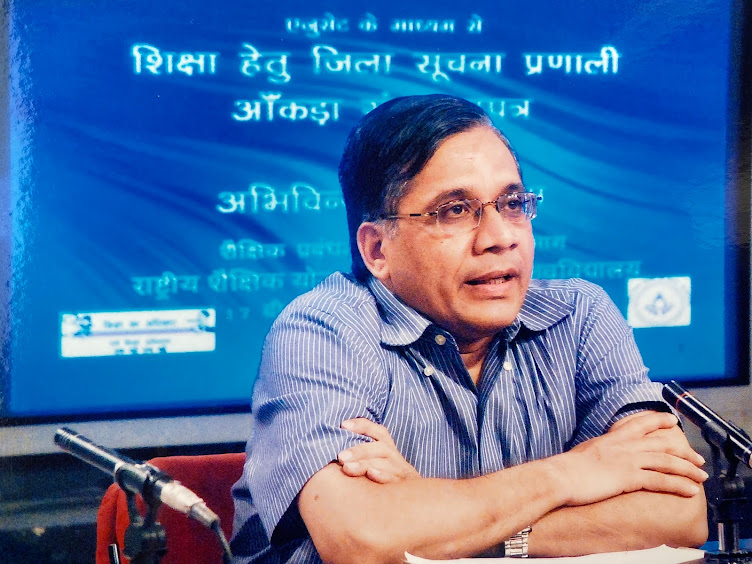Rema Nagarajan, 5 December 2009
Dinesh Kumar, a migrant from Vaishali district in Bihar, is an electrician in Delhi. Though making ends meet is a challenge, he is not willing to AT A SCHOOL NEAR YOU: Even small neighbourhood schools such as East Delhi’s Modern Happy (left) and New Titiksha Public (above) teach in both Hindi and English send his two children to a Hindi medium government school where education is free. The school fees and related expenditure exceed Rs 2,000 per month and form a quarter of the roughly Rs 8,000 that Kumar earns each month. But he is happy to foot the expense. "I want my kids to study in an English medium school. If they don't know English, what future will they have?" asks Kumar. It is such reasoning that helps explain the huge increase in enrolment in English medium schools, making it now the second largest medium of instruction in schools across the country. According to estimates, just over 10 per cent of the Indian population speaks English. But, it is a growing number and the rate of growth outpaces most vernacular languages.
The big exception is Hindi, which, of course, is in a different league with 41 per cent of the country's population speaking in that tongue. KING OF QUEEN'S The English numbers are grossly underestimated , according to Professor Arun Mehta of the National University of Education Planning and Administration (NUEPA) that collects data on children enrolled in schools across the country. "Lakhs of children studying in unrecognised English medium schools are not counted in most official data as that only includes recognised schools. So, the numbers could actually be much higher," says Mehta. As many countries enter an 'educational arms race' to acquire and maintain international competitiveness, English assumes even greater significance.
A recent British Council report on the growth of English across the world says that Asia, especially India and China , will hold the key to the long-term future of English as a global language. The report warns that China could outdo India in English. China is said to add about 20 million English speakers each year with its new policy to make English compulsory in primary schools. The report observes: "India has been triumphantly playing the English card in establishing its global leadership in outsourcing and the BPO industry.
Furthermore, the capital of the new economy in India, Bangalore, lies in the south where regional languages are, in linguistic terms, more remote from Hindi than English, and where use of English has long represented a political challenge to the linguistic hegemony of the north." In the southern states in particular - and outside the Hindi belt in general - English has always found greater acceptance. Education is almost entirely in English in Nagaland, Arunachal Pradesh and Sikkim. Over half the enrolment in the other north eastern states, barring Tripura, is in English medium. Hindi does not figure at all in this part of the country.
LIP SERVICE Some 60 years after Hindi was adopted as the official language - along with English - it has not quite become the country's link language as was envisaged. This is despite the crores that the central government spends every year on promoting the "raj bhasha" . The resistance to Hindi in non-Hindi speaking states, which took the form of language riots during the sixties, is still far from blunted, as many recent events have demonstrated.
Even today, any suggestion that Hindi is the "national language" or "rashtra bhasha" is met with stiff opposition and those who advocate its cause are likely to be given a frosty look and the riposte that India being a multilingual country has no single "national language" . The point was made succinctly when in the early '90s Mulayam Singh Yadav, then chief minister of Uttar Pradesh, wrote a letter in Hindi to his counterpart in Kerala, E K Nayanar. Nayanar gave a telling response by sending a reply in his language, Malayalam. While Hindi was not widely spoken in Thiruvananthapuram, in Lucknow, hardly anyone knew Malayalam! That linguistic feelings run deep became evident recently when Union Railway minister Mamata Bannerjee bowed to pressure from various states, especially Maharashtra, to hold the railway recruitment exams in local languages. Earlier, these exams were administered only in English and Hindi, which non-Hindi speaking states argued, with some justification, gave an unfair advantage to those from Hindi-speaking states.
A few years back, Tamil Nadu and West Bengal requested that Tamil and Bengali be allowed in their respective high courts. They quoted Article 348(2) of the constitution and relevant sections of the Official Languages Act 1963 that entitle Hindi-speaking states like Bihar, Uttar Pradesh, Madhya Pradesh and Rajasthan to use their official language - Hindi - in their respective high courts. The request was rejected. LINGUISTIC LINK In 2006, when India asked for Hindi to be included as one of the languages used in the United Nations, saying it was spoken by a substantial proportion of the world population, the biggest opposition to this move ironically came from within India, from the non-Hindi speaking states. There couldn't be clearer evidence of the fact that Hindi is not yet accepted as a pan-Indian "link language" .
Robert Bellarmine, former English Studies Officer of the British Council, South India, feels that in India, which is more like a group of nations, one local language being privileged over another would never be acceptable. "Hence, English is useful, as there is wider political acceptability. It is also the most preferred language for education and in the job market. For the integrity of the nation too, it might be better if English is a link language," says Bellarmine, who is also a fellow at the Center for English and Foreign Language Studies in Hyderabad. It's a logic many Indians would find difficult to refute.
Times Insight Group






No comments:
Post a Comment